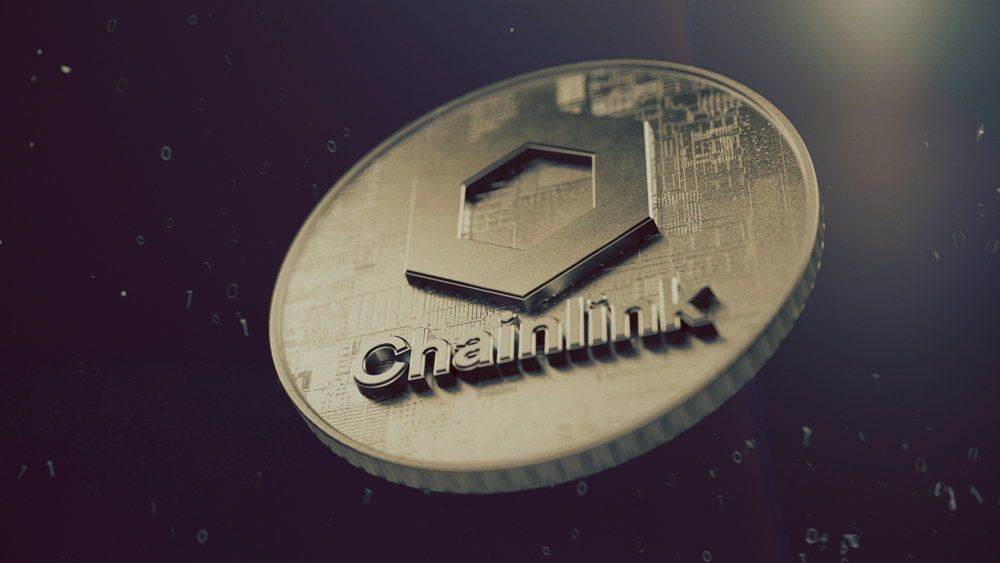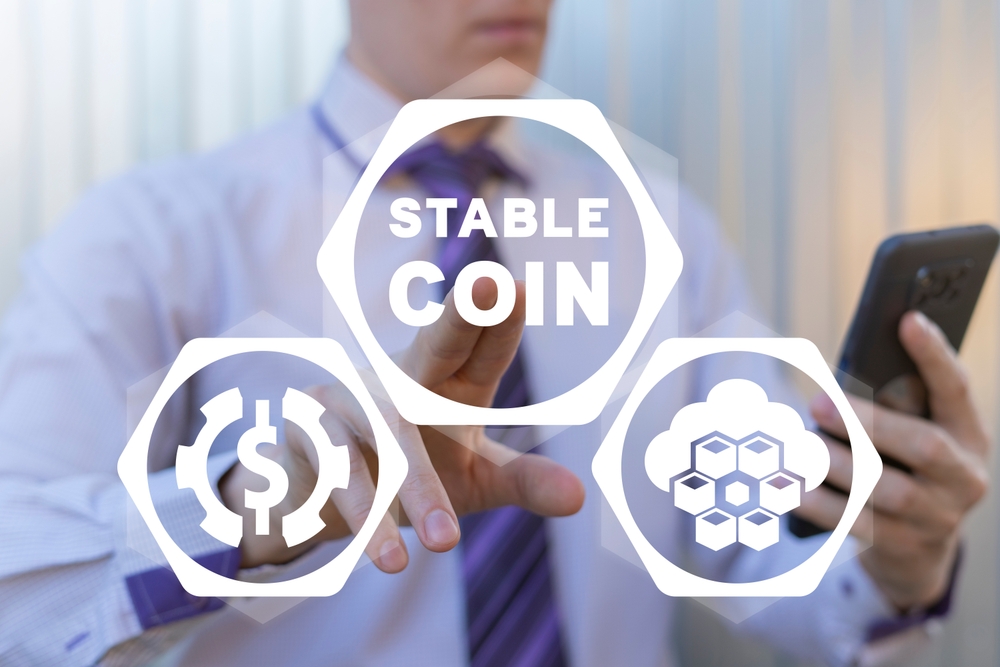Table of Contents
ToggleIntroduction
ChainLink’s Cross-Chain Interoperability Protocol (CCIP) is a groundbreaking innovation aimed at enhancing the capabilities of smart contracts. By allowing secure and trust-minimized messaging across various blockchains, CCIP represents a significant advancement in the field of decentralized finance (DeFi). ChainLink itself operates as a decentralized oracle network, providing external data to smart contracts on any blockchain, a function that is integral to the operation of many DeFi applications. With the introduction of CCIP, the scope of these applications broadens, enabling a new level of interoperability.
CCIP’s architecture is designed to be secure, flexible, and adaptable, underscoring ChainLink’s commitment to fostering a trust-minimized environment necessary for cross-chain communication. The protocol facilitates the movement of data and value between different blockchain networks in a reliable manner, which is vital for the DeFi ecosystem’s growth. As smart contracts become increasingly complex and require inputs and outputs across multiple blockchains, CCIP serves as the backbone for such sophisticated operations. The protocol’s impact on tokenomics and the broader blockchain ecosystem holds potential for significant influence on the future trajectory of DeFi development.
Key Takeaways
- ChainLink’s CCIP is a critical innovation for smart contract interoperability.
- The CCIP protocol ensures secure and flexible cross-chain communication.
- Enhanced interoperability contributes to the evolution and expansion of DeFi.
Overview of ChainLink
ChainLink serves as a critical bridge between external data sources and blockchain smart contracts. It enables decentralized applications (dApps) to interact securely with real-world data. The significance of ChainLink within the blockchain space is accentuated by its decentralized oracle network, which enhances the functionality of smart contracts, particularly on the Ethereum blockchain.
ChainLink Ecosystem
The ChainLink Ecosystem comprises a robust framework aimed at fostering the development of secure and reliable dApps. It provides:
- Decentralized Oracle Networks: This is the backbone, connecting smart contracts to off-chain data and services.
- Smart Contracts: ChainLink expands the applicability of smart contracts by allowing access to real-world data, payments, and events.
- CCIP (Chainlink Cross-Chain Interoperability Protocol): This protocol enhances the ability to send messages and tokens across various blockchains.
ChainLink’s Role in Blockchain Technology
ChainLink’s role in blockchain technology is pivotal as it assures secure data feeds, fostering trust in dApps and smart contracts. Its responsibilities include:
- Data Accuracy: Ensuring that external data is accurately reflected in the blockchain.
- Security: ChainLink maintains high-security standards to prevent data manipulation.
- Interoperability: Through CCIP, ChainLink ensures seamless information and value transfer across multiple blockchain networks.
Understanding CCIP
The Cross-Chain Interoperability Protocol (CCIP) is an innovative contribution from ChainLink, aiming to significantly enhance how blockchains communicate with each other. It stands as a pivotal development for enabling seamless interoperability across different blockchain networks.
Purpose of CCIP
The primary objective of CCIP is to establish a standardized way of sharing information and value between disparate blockchain systems. This protocol allows for the secure transfer of data and tokens, potentially transforming the way decentralized applications operate by enabling them to utilize resources from multiple blockchains simultaneously.
How CCIP Enhances Interoperability
By facilitating cross-chain messaging and token movements, CCIP addresses one of the most pressing issues within the blockchain domain: interoperability. The implementation of this protocol means smart contracts on one blockchain can reliably request data and trigger events on another, enabling a more interconnected and versatile ecosystem. This level of interoperability is crucial for the advancement of blockchain technology, as it opens up a realm of possibilities for developers and users alike, ranging from multi-chain applications to enhanced decentralized finance (DeFi) functionalities.
ChainLink CCIP Architecture
The ChainLink Cross-Chain Interoperability Protocol (CCIP) is designed to enhance the interoperability and scaling capabilities of blockchain networks. By leveraging a decentralized oracle network, CCIP facilitates secure, trust-minimized messaging across various blockchains.
Components of CCIP
ChainLink CCIP comprises several critical components that work in unison to ensure a seamless inter-chain communication experience. Oracles operate as the main executors within the architecture, providing a bridge for data and commands to transfer between distinct blockchains. These oracles are responsible for validating and relaying messages, acting in accordance with the protocols established for cross-chain communication.
The protocol also incorporates Smart Contracts, which are deployed on participating blockchains. They define the rules for processing messages that are sent and received, thereby codifying the logic required for chain-to-chain interactions.
Network Topology and Design
In terms of network topology, CCIP utilizes a modular design that supports scaling and flexibility. The ChainLink network is comprised of multiple independent node operators which are organized to provide decentralized services. This multi-node structure ensures that the system remains robust and can efficiently handle a large volume of cross-chain messages without a single point of failure.
The design of the ChainLink network emphasizes redundancy and geographic distribution, which are critical for maintaining uptime and resilience against attacks. Each oracle node within the network is strategically dispersed to avoid clustered vulnerabilities and to provide a global infrastructure for consistent communication across various blockchain networks.
Smart Contracts and ChainLink
The interaction between smart contracts and ChainLink, particularly regarding ChainLink’s Cross-Chain Interoperability Protocol (CCIP), represents a leap in blockchain technology that enables more sophisticated and interconnected applications.
Role of Smart Contracts
Smart contracts are self-executing contracts with the terms of the agreement directly written into lines of code. They run on blockchain networks and are immutable once deployed, which ensures that no party can alter the agreed-upon terms. The primary advantage of smart contracts is their ability to execute transactions automatically when predefined conditions are met without the need for intermediaries.
Integration with ChainLink CCIP
ChainLink’s CCIP offers a standard for cross-chain interoperability, which is crucial for the evolution of blockchain technology. Cross-chain smart contracts can communicate and share data across multiple blockchain networks, thereby expanding their capabilities beyond a single blockchain. This enables the creation of cross-chain DApps (decentralized applications) which can leverage the strengths of multiple blockchains for improved efficiency, lower costs, and enhanced functionality. The integration with ChainLink CCIP allows smart contracts to securely access off-chain data feeds, web APIs, and traditional bank payment systems, which are vital for complex financial applications.
Cross-Chain Applications
The advent of ChainLink Cross-Chain Interoperability Protocol (CCIP) marks a significant milestone in the evolution of blockchain technology, enabling seamless cross-chain applications that are reshaping industries like finance and gaming.
Enabling Cross-Chain Interactions
ChainLink’s CCIP serves as a foundational layer for cross-chain applications, allowing them to communicate and share value between different blockchains. This interoperability protocol is a game-changer for developers who can now create complex applications that leverage the unique strengths of multiple chains. For example, cross-chain lendingplatforms can interact with various blockchains to offer users the best possible rates, while cross-chain yield strategies can optimize returns across different ecosystems.
Use Cases in Finance and Gaming
In finance, cross-chain applications enable novel functionalities like multi-chain asset management and decentralized exchange (DEX) platforms that bridge disparate networks, allowing for increased liquidity and financial inclusion. Users can move assets like stablecoins or tokens across blockchains, accessing diverse financial services without being limited to a single chain.
In the realm of gaming, these applications unlock the potential for assets like in-game items or currencies to exist and be traded across different games, even if they’re built on separate blockchains. Gamers can thus benefit from true ownership and the interoperability of their digital assets, fostering an ecosystem where items can be utilized in numerous gaming environments.
ChainLink Tokenomics
The economic structure of ChainLink revolves around its native token, LINK. Its design is critical for facilitating several key operations within the ChainLink network, ranging from compensating node operators to creating a framework that fosters network growth.
LINK Token Utility
LINK tokens serve as the primary currency within the ChainLink ecosystem. They are used as payment for ChainLink nodes that retrieve, compute, and deliver real-world data onto the blockchain. As part of the ChainLink infrastructure, LINK tokens are essential for ensuring that the off-chain data feeds are reliable and tamper-proof. Token transfers of LINK enable smart contracts to function securely in a decentralized manner, as they reward the nodes for their services.
- Payment to Node Operators: Node operators, known as oracles, receive LINK for their work in bringing external data to the blockchain.
- Collateral for Node Operators: Nodes may also stake LINK as collateral to demonstrate commitment and to ensure the quality of the data provided.
Economic Incentives and Network Effects
ChainLink’s tokenomics is designed to encourage a virtuous cycle that enhances network effects. The economic incentives are such that the more usage the network gets, the greater the demand for LINK tokens.
- Rewards for Reliability: Nodes that have higher stakes of LINK and perform efficiently are rewarded with more contracts, incentivizing the sustenance of high-quality data provision.
- Demand and Supply Dynamics: An increase in the adoption of ChainLink services leads to higher demand for LINK, potentially impacting its value.
By facilitating token transfers as a built-in mechanism of the smart contracts, the tokenomics of ChainLink positions LINK as a crucial facilitator of peer-to-peer transactions across diverse markets, enhancing the overall network value.
The Future of Decentralized Finance (DeFi)
The robust development of Chainlink’s Cross-Chain Interoperability Protocol (CCIP) is poised to significantly enhance the DeFi landscape, forging a path for more interconnected financial ecosystems.
Impact of CCIP on DeFi
Chainlink’s introduction of the Cross-Chain Interoperability Protocol (CCIP) is a giant leap for decentralized finance. CCIP aims to provide a universal and open standard for data transmission and cross-chain communication. This allows DeFi platforms to securely access off-chain data feeds, web APIs, and traditional bank payments. By implementing CCIP, DeFi platforms can leverage Chainlink’s decentralized oracles to not only share information across multiple blockchain networks but also to execute cross-chain smart contracts. This fosters a more versatile environment for users who can engage in DeFi with increased trust and flexibility.
- Increased Trust: By using Chainlink’s decentralized oracle network, trust is distributed across a network of secure, independent nodes.
- Enhanced Flexibility: Interoperability facilitates new features like cross-chain swaps and multi-chain asset collateralization.
The adoption of CCIP is a transformative development for DeFi, ensuring that contracts not only operate within a single chain’s silo but can act on information from a multitude of chains and external systems.
Cross-Chain DeFi Platforms
The advancement of cross-chain DeFi platforms underlines the second transformative effect of CCIP. DeFi platforms can integrate multiple blockchain networks, thereby broadening their reach and capabilities.
- Multi-Chain Accessibility: Users access a wider range of assets and services across different chains.
- Operational Efficiency: Cross-chain platforms reduce the complexities and transaction costs associated with multi-chain interactions.
As a result, DeFi platforms are becoming increasingly sophisticated, offering users seamless interaction within the broader Web3 ecosystem. They not only contribute to the growth and adoption of DeFi but also pave the way for innovative financial products and services that transcend traditional blockchain limitations. Recognizing the potential of such interoperability, developers and users are strongly drawn to platforms that support CCIP standards, heralding a future where DeFi’s influence is boundless.
With the implementation of the Cross-Chain Interoperability Protocol, the landscape of decentralized finance is on the brink of a revolution. Through Chainlink’s CCIP, DeFi platforms are evolving into more powerful, integrated networks capable of fostering a truly interconnected financial world.
Security and Trust
In the realm of blockchain technology, ensuring robust security and trust mechanisms is crucial. ChainLink dedicates considerable effort to establish a secure and reliable framework for its decentralized oracle network, aiming to mitigate risks and enhance trust among users.
ChainLink’s Approach to Security
ChainLink employs a multi-faceted strategy to bolster security within its decentralized oracle network. Firstly, oracle reliability is a top priority. ChainLink nodes are incentivized to perform accurately and truthfully to maintain their reputation and receive rewards. This is critical for the network’s overall reliability. To address risk management, ChainLink implements rigorous node operator selection processes, ensuring participants have a historical track record of stability and dependability.
Additionally, the security of the network is reinforced by its decentralized nature. With numerous independent nodes, the risk of data manipulation or system failure is distributed, reducing the likelihood of a single point of failure. Smart contracts, pivotal in the blockchain ecosystem, are used to enforce the rules of the network, further securing the integrity of the oracle service.
Trust in Decentralized Systems
Trust is an essential aspect of any decentralized system. For ChainLink, trust is built through a combination of transparent processes and cryptographic proofs that offer users verifiable assurances of data integrity. Each ChainLink node’s performance and response data are recorded on the blockchain, which creates a transparent, tamper-proof ledger of activity. This visibility ensures that users can trust the oracle service is functioning as intended.
ChainLink’s decentralized oracle network also utilizes external adapters that serve as secure bridges between the blockchain and off-chain data sources. This allows the integration of real-world data into smart contracts while preserving the trust and security that are foundational to blockchain technology. Through these mechanisms, ChainLink strives to provide a trusted, secure, and reliable oracle service to smart contracts on any blockchain.
ChainLink in the Broader Ecosystem
ChainLink stands as a crucial bridge that links blockchain ecosystems to traditional systems, fostering adoption and integration across industries. With its ability to securely and reliably process off-chain data, ChainLink plays a pivotal role in advancing both crypto- and web3 applications.
Integration with Traditional Systems
ChainLink’s Cross-Chain Interoperability Protocol (CCIP) offers a means for traditional systems to connect with various blockchain ecosystems. Institutions are integrating ChainLink to tap into decentralized finance (DeFi) and other blockchain functionalities without sacrificing the reliability and security they’re accustomed to. For instance, using ChainLink, a bank could automate its international payment systems, accessing real-time exchange rates and transaction verification services with enhanced security and reduced reliance on intermediaries.
Adoption in the Crypto and Web3 Space
Within the crypto sphere, ChainLink is recognized for its robust contribution to smart contract reliability. The platform’s secure oracles ensure that smart contracts in the crypto world respond to actual, verified data. This is fundamental for complex transactions and sophisticated financial products within DeFi. Moreover, in the web3 space, ChainLink is empowering developers to build applications that interact seamlessly with real-world data and services. They ensure end-to-end trust by providing tamper-proof inputs and outputs for smart contracts, thus fortifying applications against manipulation and ensuring they function as intended across the entire blockchain ecosystem.
Deployment and Developer Resources
Developers interested in leveraging the ChainLink Cross-Chain Interoperability Protocol (CCIP) have access to a suite of tools designed to facilitate deployment, testing, and integration. These resources are geared towards a smooth transition to the mainnet following a robust early access period.
Developing with ChainLink CCIP
Developers aiming to integrate ChainLink CCIP into their projects are provided with comprehensive documentation and a set of SDKs. Documentation usually covers:
- Step-by-step integration guides
- Best practices for security and efficiency
- API references
In addition to documentation, SDKs and tooling aid in:
- Simplifying interaction with CCIP
- Streamlining smart contract development
- Testing cross-chain functionalities
Furthermore, ChainLink operates developer forums and technical support channels to assist during the development process. These platforms often become a place for submission and review of queries, fostering a collaborative environment for improvement and study.
Early Access and Mainnet Launch
Early Access opportunities are critical for testing and refining the integration of ChainLink CCIP before it goes live on the mainnet. During this phase, developers can:
- Deploy their applications within test environments
- Execute cross-chain transactions without the risk of real asset loss
Leading to the Mainnet Launch, the focus is on ensuring that the CCIP is optimized for real-world use. The ChainLink community typically expects a mainnet launch to offer:
- A secure and stable environment for production-level applications
- Full interoperability features as advertised
By carefully navigating the early access phase, developers help ensure ChainLink CCIP’s mainnet launch is successful and meets the network’s high standards for security and functionality.
Frequently Asked Questions
This section addresses common queries regarding Chainlink’s Cross-Chain Interoperability Protocol (CCIP), detailing its functionalities and impacts on the blockchain landscape.
What is the expected release date of Chainlink’s CCIP?
As of now, there is no official release date for Chainlink’s CCIP. The team is actively working on the protocol, with updates provided through official Chainlink channels.
How does Chainlink’s CCIP improve upon existing oracle solutions?
Chainlink’s CCIP aims to enhance oracle solutions by enabling cross-chain communication and interoperability, providing a more universal and flexible framework for smart contracts to interact with external systems and other blockchains.
What are the unique features that Chainlink’s CCIP offers to the blockchain ecosystem?
CCIP introduces features like decentralized messaging, enhanced security protocols, and data transmission across various blockchains, adding a layer of functionality that connects otherwise isolated blockchains.
In what ways does Chainlink’s CCIP differ from LayerZero?
While Chainlink’s CCIP and LayerZero both facilitate cross-chain communication, CCIP emphasizes decentralized data oracles and secure message passing, whereas LayerZero focuses on asset transfers with a lightweight approach.
Can CCIP be considered a blockchain bridge, and what are its use-cases?
CCIP can be considered a blockchain bridge with an emphasis on secure data transfer and smart contract interoperability. Use-cases extend to decentralized finance, cross-chain applications, and secure oracle services.
What is the process behind Chainlink’s CCIP and how does it secure data transmission?
CCIP employs decentralized oracle networks to verify and relay data, ensuring secure and tamper-evident messaging across multiple blockchains, thereby maintaining the integrity and reliability of cross-chain interactions.












